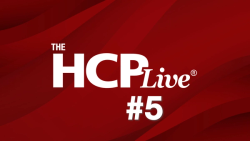
OR WAIT null SECS
GLP-1 RAs and the Move to Combination Therapy in 2025, with Ankeet Bhatt, MD, MBA
Bhatt discusses his expectations for the future of cardiology in 2025, including GLP-1-RAs and the push towards combination therapy.
In recent years, cardiology has advanced further and faster than many other specialties, with innovations and discoveries cropping up almost constantly. From new treatments themselves to the efficacy and safety of their delivery, the patient side of cardiology is expanding rapidly, and research on the disease is not showing signs of slowing down.
Cardiology's growth was showcased again this year at the American College of Cardiology (ACC) 2025 Annual Scientific Sessions. With more than 4750 abstracts and 1300 expert faculty, the conference covered 53 late-breaking clinical trials in over 300 sessions from March 29-31.
A leading expert in the field, Ankeet Bhatt, MD, MBA, a research scientist at the Division of Research and an associate physician and practicing cardiologist and intensivist at the Kaiser Permanente San Francisco Medical Center, sat down with HCPLive's editorial team to discuss what he expects to see from cardiology over the rest of 2025.
HCPLive: What are you looking forward to in cardiology for the rest of 2025?
Bhatt: It's a great time to be in cardiovascular, renal, and metabolic health, because there's so much happening. I think we're going to learn a lot more about the class of medicines that are related to the glucagon-like peptide 1 GLP-1 receptor agonist (GLP-1 RA). There's multiple therapeutics coming on [at ACC] that are GLP-1-RAs plus. So I think we're going to learn a lot more about their modifying effect.
I'm excited for the trend toward combination therapy, because I think we're reaching a point in which our patients are medically complex, and there's lots of available, highly efficacious therapies, but we need to be thinking more smartly about how to deliver those therapies in a way that's patient centric, and I see that as, really, a care delivery problem. But I think there's a lot of innovation that can happen there.
And then I'm excited about heart failure still. I think we've made lots of progress in both heart failure with reduced and preserved ejection fraction (HFrEF and HFpEF). I think the latter half of the year is going to tell us more about certain populations, for example, those who have marginal blood pressure or renal function or other things. Are there available therapies outside of the advanced heart failure therapies for these patients? I'm looking forward to an exciting back half of 2025.
Relevant disclosures for Bhatt include Sanofi and Novo Nordisk.


